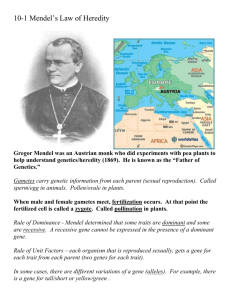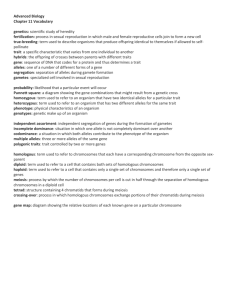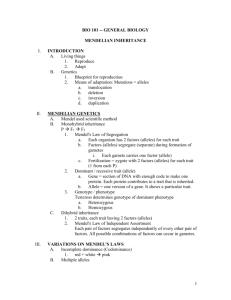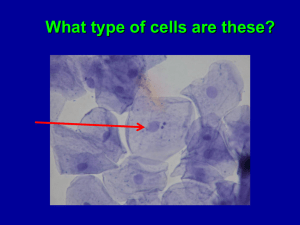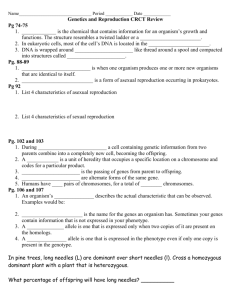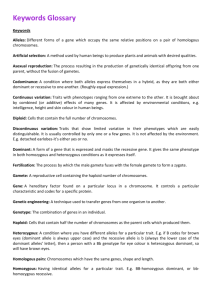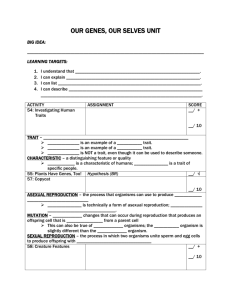Genetics Vocabulary
advertisement
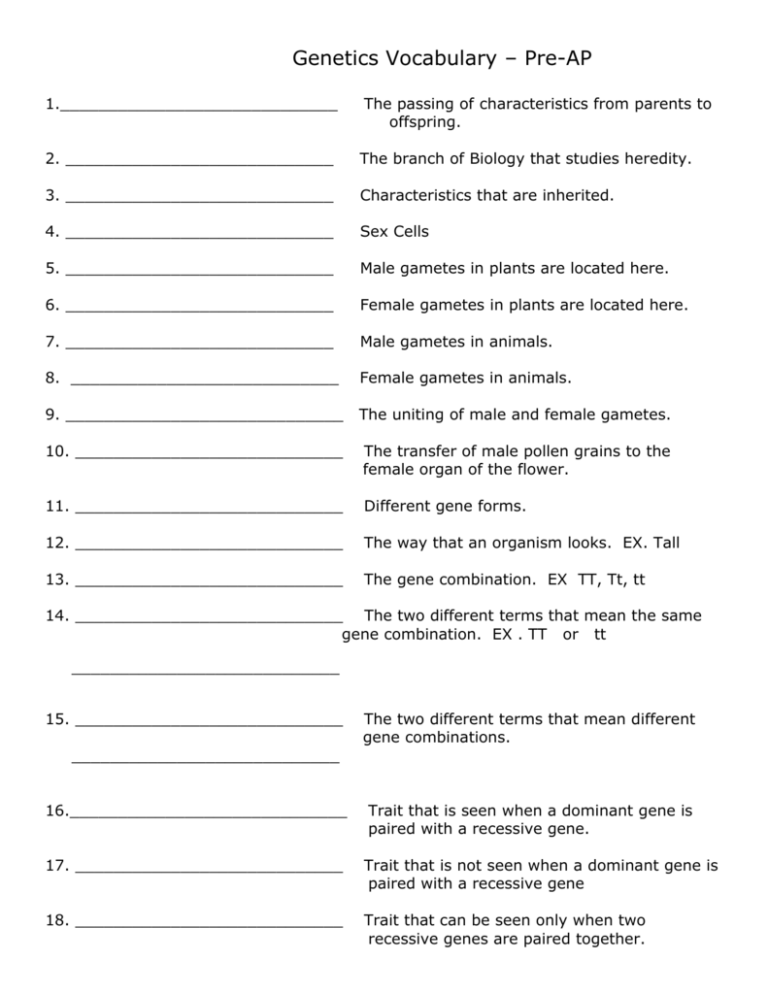
Genetics Vocabulary – Pre-AP 1._____________________________ The passing of characteristics from parents to offspring. 2. ____________________________ The branch of Biology that studies heredity. 3. ____________________________ Characteristics that are inherited. 4. ____________________________ Sex Cells 5. ____________________________ Male gametes in plants are located here. 6. ____________________________ Female gametes in plants are located here. 7. ____________________________ Male gametes in animals. 8. ____________________________ Female gametes in animals. 9. _____________________________ The uniting of male and female gametes. 10. ____________________________ The transfer of male pollen grains to the female organ of the flower. 11. ____________________________ Different gene forms. 12. ____________________________ The way that an organism looks. EX. Tall 13. ____________________________ The gene combination. EX TT, Tt, tt 14. ____________________________ The two different terms that mean the same gene combination. EX . TT or tt ____________________________ 15. ____________________________ ____________________________ The two different terms that mean different gene combinations. 16._____________________________ Trait that is seen when a dominant gene is paired with a recessive gene. 17. ____________________________ Trait that is not seen when a dominant gene is paired with a recessive gene 18. ____________________________ Trait that can be seen only when two recessive genes are paired together. 19. ____________________________ In the statement: Two alleles or gene forms, one from the male and one from the female, are needed for traits to be expressed. What do we mean by expressed? 20. ____________________________ The letter notation to represent the original parents in a cross. 21. ___________ The letter notations to represent the first generation offspring (son or daughter) and the second generation offspring (son or daughter). & ___________ 22. ____________________________ A two-factor cross which involves two traits. 23. ____________________________ Law that states that the two alleles for each trait must separate when sex cells are formed. 24. ___________________________ Law that states that different traits are inherited independently of each other. 25. ____________________________ Type of math used to predict the likelihood of occurrences. 26. ____________________________ Inheritance pattern in which both alleles for the trait are equally dominant, which produces an offspring phenotype that is somewhere between the two homologous parents phenotypes. EX.__________________________ 27. ____________________________ EX.__________________________ 28. ____________________________ EX.__________________________ Inheritance pattern in which both alleles for the trait are equally dominant and both are expressed in the offspring. Inheritance pattern where the individual only inherits two alleles but there are 3 or more possible alleles in the whole population. 29. ____________________________ Inheritance pattern where phenotypes are the result of the interaction of several genes often on different chromosomes. 30. ____________________________ Pair of chromosomes -- one from the father and one from the mother. 31. ____________________________ Cell that has 2 complete sets of chromosomes— one from each parent that have two complete sets of genes. EX: any body cell (not sex cells) 32. ___________________________ Cell that has one set of chromosomes (one set of genes) which is half of amount that a normal body cell for that type of individual. 33. ___________________________ Tightly coiled microscopic structures made mostly of DNA that appear banded because they consist of sections of DNA (genes) that code for the production of proteins and therefore determine a trait. Each of these consists of millions of bases. 34. __________________________ A process of cell division that reduces the number of chromosomes in a cell by going through two cell divisions to take one diploid cell and produce four haploid cells. 35. __________________________ The exchange of chromosome parts (genes) between two homologous chromosomes as they touch each other when the sister chromatids form a tetrad in Prophase I. 36. __________________________ A listing of the known genes on a chromosome that are named after the problem that the abnormal alleles cause. .
